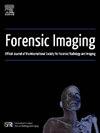Postmortem computed tomography imaging in giant anteaters (Myrmecophaga tridactyla)
IF 1
Q4 RADIOLOGY, NUCLEAR MEDICINE & MEDICAL IMAGING
引用次数: 0
Abstract
This study aimed to describe the findings of post-mortem CT in three adult giant anteaters. The first animal was found with paraparesis of the hind limbs in a rural area and rescued by a fire brigade. CT of the thoracic spine showed malalignment with a fracture-dislocation of T15. The fracture of T15 was compressive and there was a moderate narrowing of the spinal canal. The death was likely due to a spinal cord injury. The second animal was found unconscious in a rural area and rescued by the municipal guard. A CT scan revealed a significant increase in volume that extended to the submandibular and ventral upper cervical region with the presence of gas and a low-density core. Additionally, the right tympanic cavity was filled with material of soft tissue density. The animal likely died due to a severe neck infection. The third animal was in a rural area with body wounds. The CT scan showed an increase in muscle volume in the hind limbs with the presence of gaseous content. There was a loss of definition of the abdominal wall and the presence of free intraperitoneal gas. The death was attributed to the heavily infected and deep skin wounds, possibly leading to peritonitis. The post-mortem CT findings were valuable in identifying lesions and determining the cause of death in the three giant anteaters. The sensitivity of the post-mortem exam could be increased by including other imaging techniques such as magnetic resonance imaging.
巨型食蚁兽(Myrmecophaga tridactyla)死后计算机断层成像
本研究旨在描述三只成年巨食蚁兽的死后CT结果。第一只动物在农村地区被发现后肢截瘫,并被消防队救出。胸椎CT显示T15骨折脱位错位。T15骨折为压缩性骨折,椎管有中度狭窄。死因很可能是脊髓损伤。第二只动物在农村地区被发现失去知觉,并被市政警卫救出。CT扫描显示体积明显增加,并延伸至下颌下和上颈椎腹侧区域,存在气体和低密度核心。此外,右鼓室充满软组织密度物质。这只动物可能死于严重的颈部感染。第三只动物出现在农村地区,身上有伤。CT扫描显示后肢肌肉体积增加,并伴有气体含量。腹壁模糊,存在游离腹膜内气体。死亡的原因是严重感染和很深的皮肤伤口,可能导致腹膜炎。验尸后的CT检查结果对确定三只巨型食蚁兽的病变和死亡原因很有价值。通过使用磁共振成像等其他成像技术,可以提高尸检的灵敏度。
本文章由计算机程序翻译,如有差异,请以英文原文为准。
求助全文
约1分钟内获得全文
求助全文
来源期刊

Forensic Imaging
RADIOLOGY, NUCLEAR MEDICINE & MEDICAL IMAGING-
CiteScore
2.20
自引率
27.30%
发文量
39
 求助内容:
求助内容: 应助结果提醒方式:
应助结果提醒方式:


